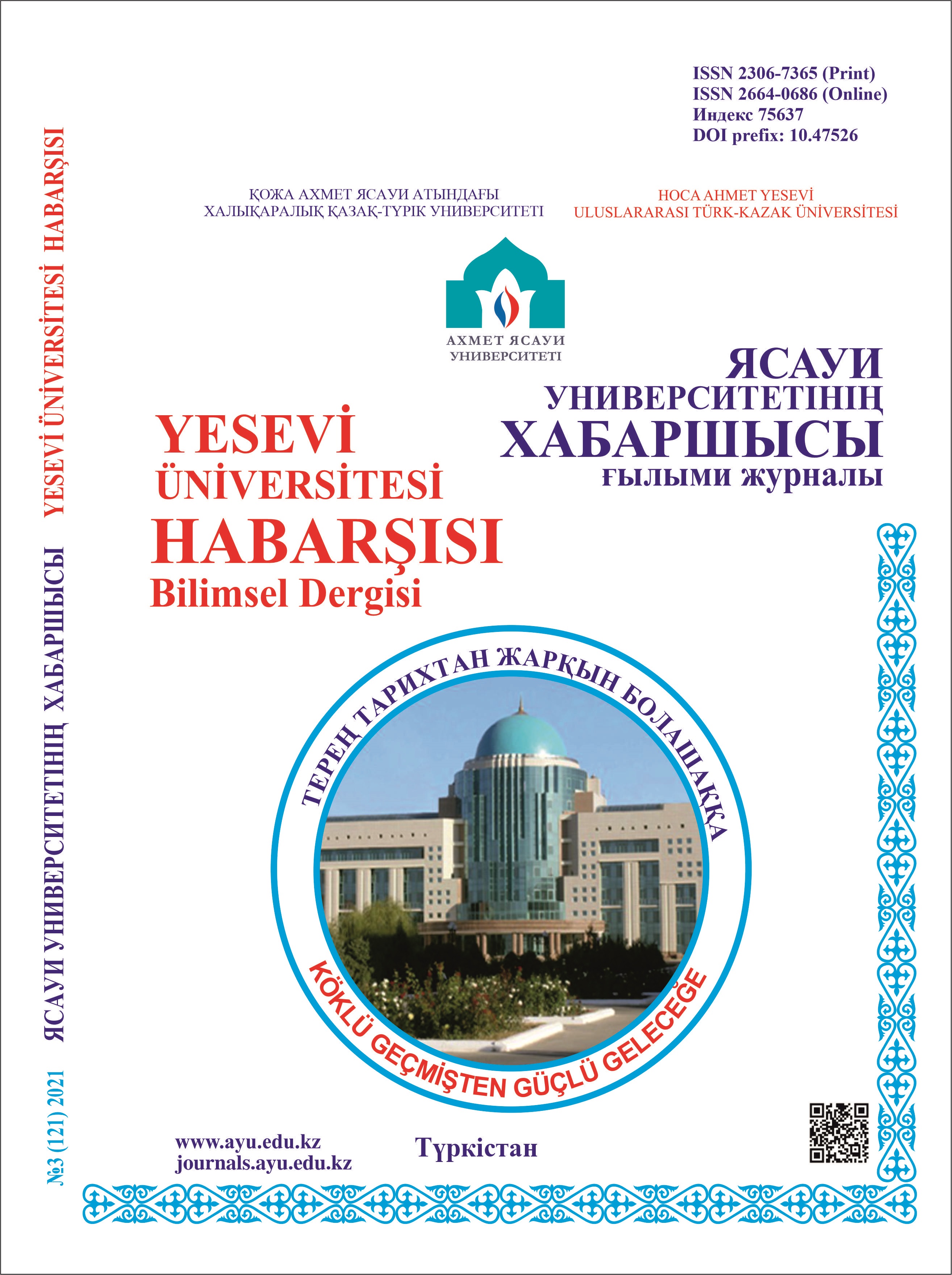Differences in Voice and Tone in Speech
127 68
Keywords:
prosodics, tone, pragmatics,semantics, text, communication, speech.Abstract
The article describes the semantic, communicative and pragmatic activities of prosody in the text. The theoretical foundations of the study of voice and tone in language, the semantics of voice and tone, and the main features of prosody will also be considered. The mutual adjustment of the voice register of the participants in the dialogue is being studied. The tone features determine the degree of dialogue imitation (self-realization of the communicant). With the help of certain tone characteristics, information is given about the peculiarities of the manner of speech, the identity of speech, i.e. about the extent to which it corresponds to the status of communicants and the genre of speech. Language is a complementary combination of two systems: verbal and non-verbal. The study of the latter examines not only oral speech at the present time, especially when attention is paid, but also the analysis of speech discourse and situations in which speech, listening, communication. The use of non-verbal communication components helps to avoid verbal retelling, unreasonable repetition, and makes speech effective, accurate, and semantically complete. The use of non-verbal components of communication gives emotionality, brightness to speech, and focuses attention on any meaning of the spoken word. Therefore, the article analyzes the rationale for the use of gesture components, including prosodic ones, in theoretical and experimental speech communication.
References
ПАЙДАЛАНЫЛҒАН ӘДЕБИЕТТЕР ТІЗІМІ
Мағжан С. Бейвербалды әлеуметтік акті ретіндегі жанасу // Ясауи университетінің хабаршысы. – 2016. – №1(99). – Б. 140–147.
Грошев Д.В. Отличия побудительных высказываний на уровне просодии (экспериментально-фонетическое исследование на материале современного немецкого языка) // Modern Humanities Success / Успехи гуманитарных наук. – 2022. – №7. – С. 117–124.
Groshev D.V. Threatening Demand as a Categorical Form of a Demand with Distinguishing Features at the Prosodic Level // Science, Engineering and Business: Материалы IV Межвузовской конференции аспирантов, соискателей и молодых ученых = Conference Proceedings and Papers IV Interacademic Conference for Graduate Students and Young Researchers. – М.: Московский государственный технический университет им. Н.Э. Баумана, 2022. – P. 24–30.
Нұршайықов Ә. Ақиқат пен аңыз. – Алматы: Атамұра, 2004. – 400 б. 5. Key M. Paralanguage and Kinesics (Nonverbal Communication). – New York: Scarecrow Pr, 1975. – 246 p. 6. Trager G.L. Paralanguaga A first approximation // Studias in linguiatiks. – 1958. – №13. – P. 1–12.
Колшанский Г.В. Паралингвистика. – М.: Наука, 1974. – 81 с.
Крейдлин Г.В. Невербальная семиотика. – М.: Новое литературное обозрение, 2004. – 581 с.
Бурак М.А. Факторизация просодического оформления тропеических средств в публичной речи // Известия Юго-Западного государственного университета. Серия Лингвистика и педагогика. – 2017. –№3 (24). – С. 15–23.
Әуезов М. Абай жолы. 4-том. – Алматы: Жазушы, 2004. – 400 б.
Иманбеков Т. Үлкен үй. – Алматы: Жазушы, 1987. – 336 б. 12. Мүсірепов Ғ. Таңдамалы шығармалар. – Алматы: Алан, 2012. – 1120 б.
Мағжан С. Көп мағынаны білдіретін просодикалық параамалдар // Түркология. – 2017. – №2 (82). – Б. 59–63.
Қазыбеков Н. Тұсаукесер. – Алматы: Жазушы, 1972. – 64 б.
REFERENCES
Magjan S. Beiverbaldy aleumettіk aktі retіndegі janasu [Touching as a non-verbal social act] // Iasaui universitetіnіn habarshysy. – 2016. – №1(99). – B. 140–147. [in Kazakh]
Groshev D.V. Otlichia pobuditelnyh vyskazyvaniy na urovne prosodii (eksperimentalno-foneticheskoe issledovanie na materiale sovremennogo nemeckogo iazyka) [Differences between motivational statements at the prosody level (experimental phonetic study based on the material of modern German)] // Modern Humanities Success / Uspehi gumanitarnyh nauk. – 2022. – №7. – S. 117–124. [in Russian]
Groshev D.V. Threatening Demand as a Categorical Form of a Demand with Distinguishing Features at the Prosodic Level // Science, Engineering and Business: Materialy IV Mejvuzovskoi konferencii aspirantov, soiskatelei i molodyh uchenyh = Conference Proceedings and Papers IV Interacademic Conference for Graduate Students and Young Researchers. – M.: Moskovskiy gosudarstvennyi tehnicheskiy universitet im. N.E. Baumana, 2022. – P. 24–30.
Nurshaiyqov A. Aqiqat pen anyz [Truth and legend]. – Almaty: Atamura, 2004. – 400 b. [in Kazakh] 5. Key M. Paralanguage and Kinesics (Nonverbal Communication). – New York: Scarecrow Pr, 1975. – 246 p. 6. Trager G.L. Paralanguaga A first approximation // Studias in linguiatiks. – 1958. – №13. – P. 1–12.
Kolshanskiy G.V. Paralingvistika [Paralinguistics]. – M.: Nauka, 1974. – 81 s. [in Russian]
Kreidlin G.V. Neverbalnaia semiotika [Non-verbal semiotics]. – M.: Novoe literaturnoe obozrenie, 2004. – 581 s. [in Russian]
Burak M.A. Faktorizacia prosodicheskogo oformlenia tropeicheskih sredstv v publichnoi rechi [Factorization of prosodic design of tropeic means in public speech] // Izvestia Iugo-Zapadnogo gosudarstvennogo universiteta. Seria Lingvistika i pedagogika. – 2017. –№3 (24). – S. 15–23. [in Russian]
Auezov M. Abai joly. 4-tom [The way of Abai. Volume 4]. – Almaty: Jazushy, 2004. – 400 b. [in Kazakh]
Imanbekov T. Ulken ui [Big house]. – Almaty: Zhazushy, 1987. – 336 b. [in Kazakh]
Musіrepov G. Tandamaly shygarmalar [Selected works]. – Almaty: Alan, 2012. – 1120 b. [in Kazakh]
Magjan S. Kop magynany bіldіretіn prosodikalyq paraamaldar [Prosodic paraamals that mean more] // Turkologia. – 2017. – №2 (82). – B. 59–63. [in Kazakh]
Qazybekov N. Tusaukeser [Presentation]. – Almaty: Zhazushy, 1972. – 64 b. [in Kazakh]

